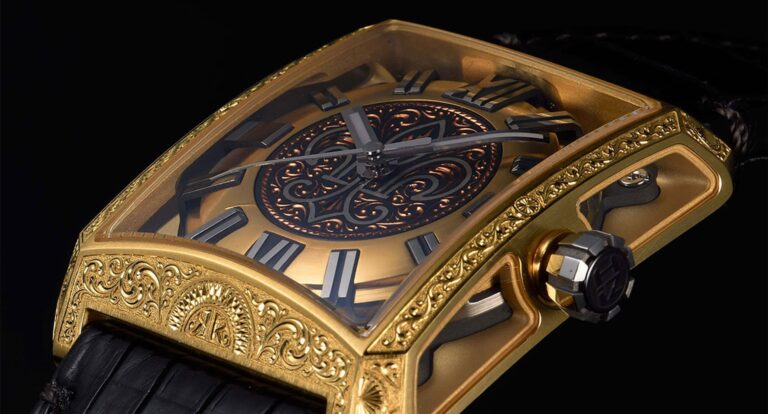Fergus Nash
When a brand as full of artistic integrity as Minase calls something a masterpiece, we should take notice. Given the level of quality and attention to detail in even the most affordable Minase watches, it’s almost unimaginable what could be done in ultra-limited production with a big budget and the help of dedicated artisans. Minase’s Masterpiece series is comprised of some truly fascinating watch dials that pair perfectly with the architecture of the 7 Windows collection.
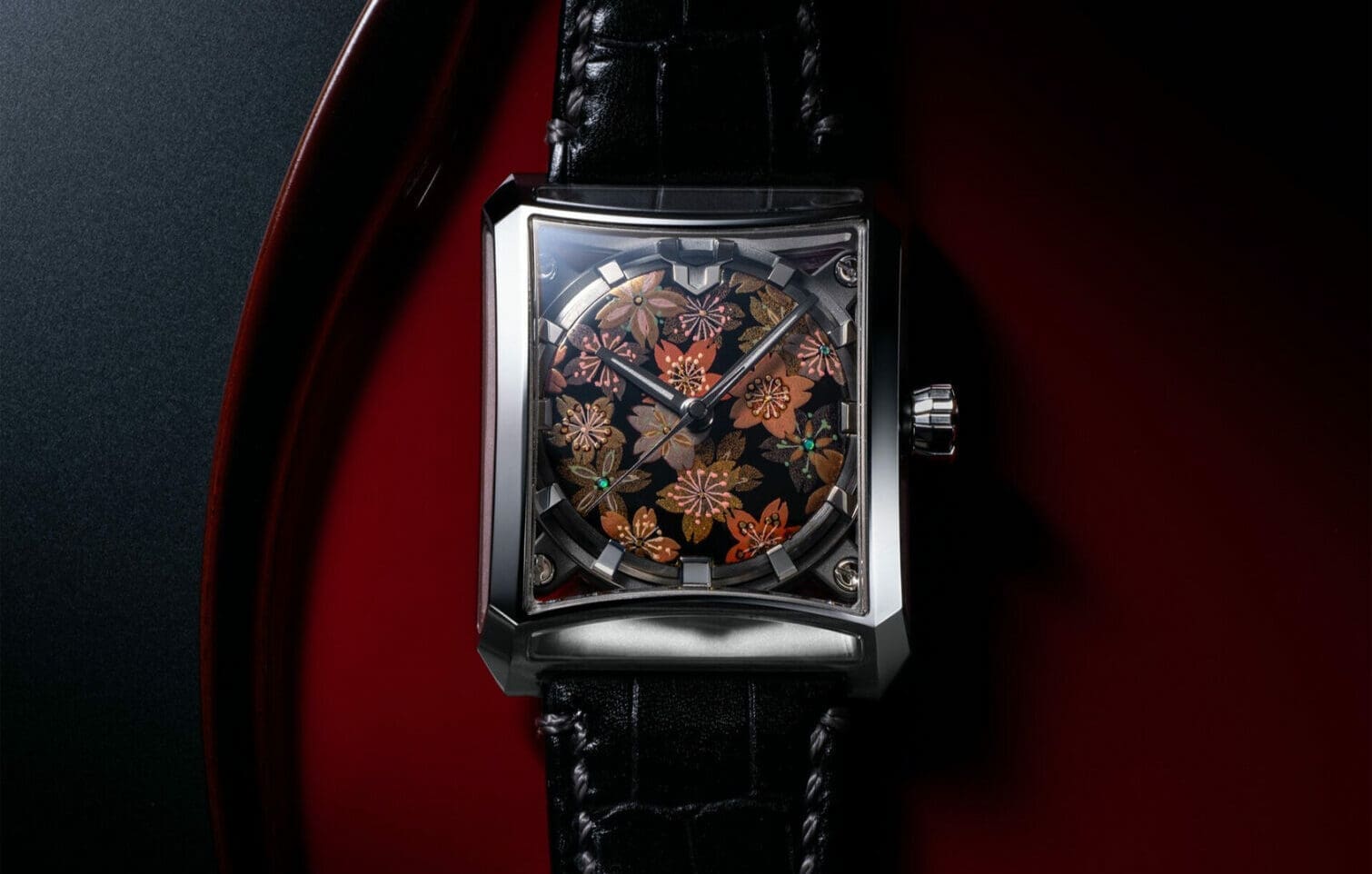
The seven windows are the ideal display for the dials and artworks of the Minase Masterpiece series. The rectangular shape already alludes to the frame of a painting. Not only that, but the case itself allows you to view the interior from all angles, giving you a new perspective of the watch from more than two dimensions. Thanks to the “case within a case” philosophy, the movement is housed behind the circular dial and suspended within the rectangular exterior using four screws on each corner. The sapphire windows also have the added benefit of allowing light to penetrate the watch from the side, resulting in a more uniform glow and illuminating as many details as possible. The movement is Minase’s KT7002, based on the ETA 2892/A2, with a 4Hz beat rate and a 42-hour power reserve. The use of a Swiss-made base movement draws attention not only to the overall aesthetic of the watch, but also to its meticulously hand-finished surfaces and diamond-polished bevels.
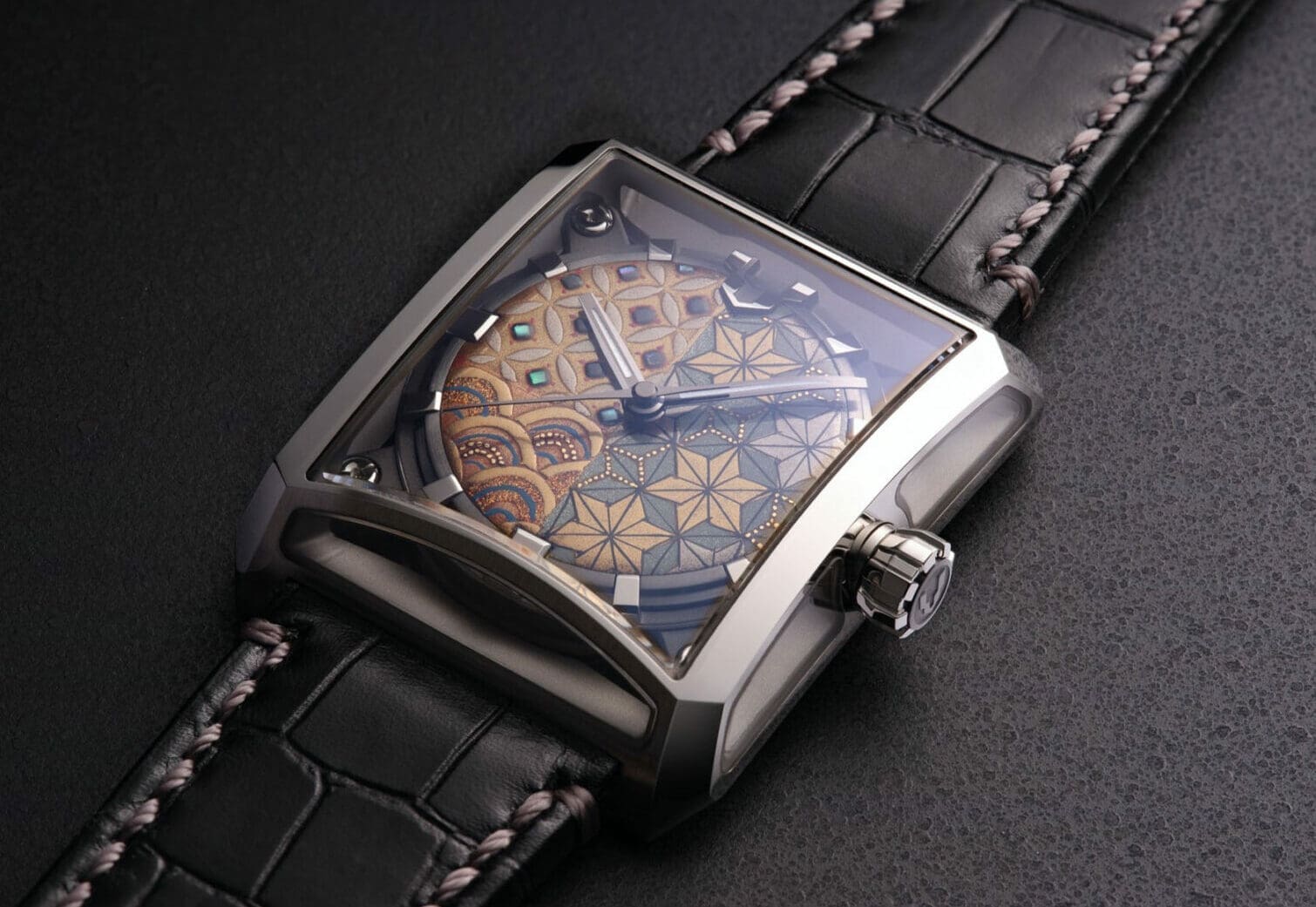

The first time I encountered the Minase Masterpiece Watch Hakose lacquer collectionespecially showcasing the talents of Junichi Hakase. Hakase is an undisputed master of maki-e, the art of sprinkling metal powder onto traditional Japanese lacquer to create specific images. The technique dates back at least 1,200 years, and lacquer has been used on watch dials before, but it is very rare to see maki-e work of this fine detail. Junichi Hakase is responsible for the first four references in the Minase Masterpiece series, each made to order and priced at CHF 13,850 for the stainless steel case and CHF 27,700 for the 18K rose gold case. Each of the four dials has its own theme and meaning in Japanese culture.


The first of the four is called Komon, and is derived from a pattern commonly found on traditional kimonos and tableware. The three sections are divided into geometric stylizations of petals and leaves, each painstakingly created with fine brushstrokes and the application of different powders that are baked into their final color. The Somei Yoshino Sakura dial depicts the famous Japanese cherry blossom, using different colored powders to show off the different colors and sizes the flower grows in. It’s a bold style that defies the idea that cherry blossoms are simply white or pink.
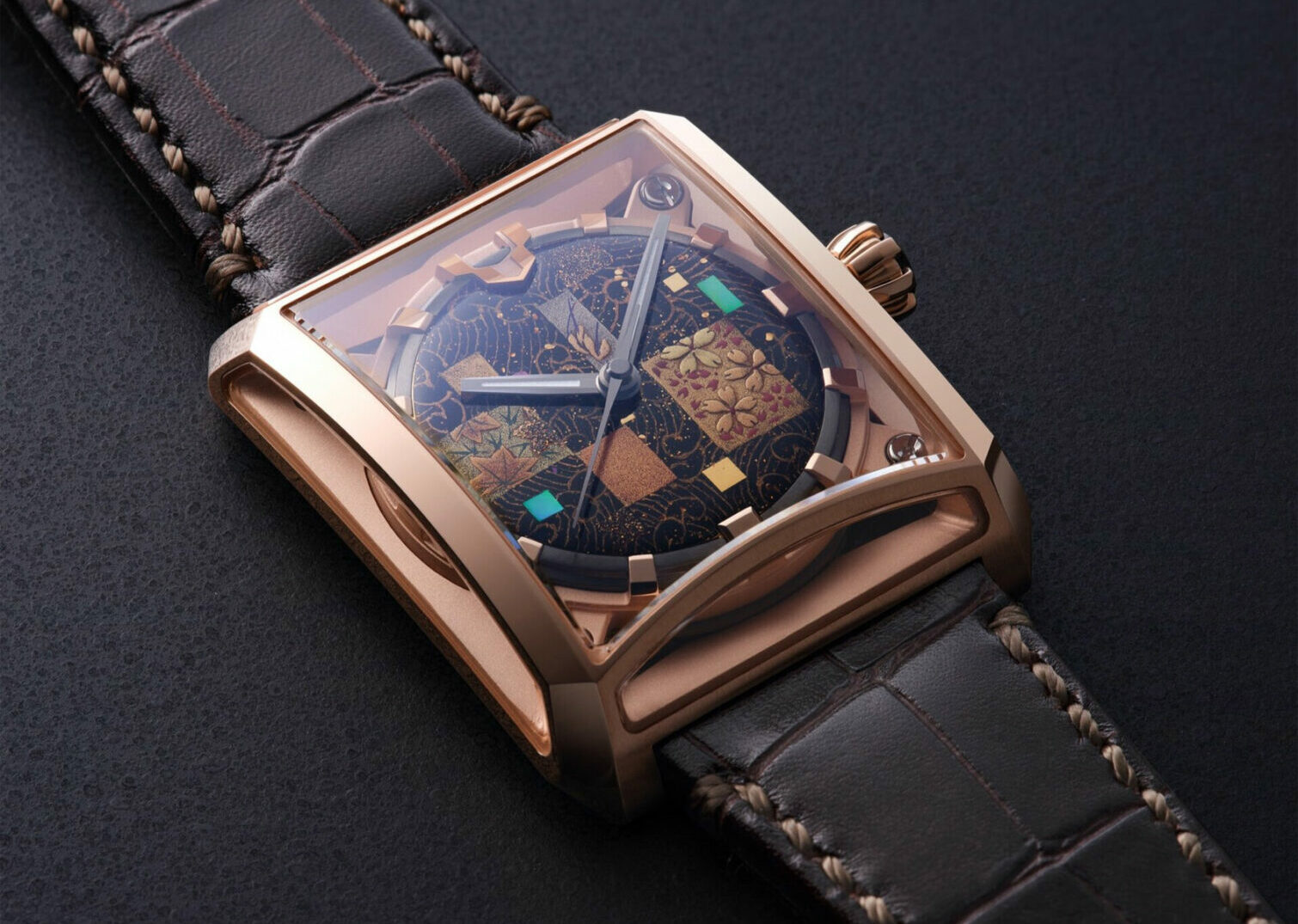

Yamazakura is another dial dedicated to the cherry blossom, but here we see a close-up of a cherry blossom with its hoof-shaped petals and tiny clusters of flowers in the background. Each tiny flower is unique and displays incredible attention to detail. The fourth and final piece in the Hakose Urushi collection is the Four Seasons dial, which features a checkered pattern of some examples of the Japanese seasonal characteristics. The running water of summer, autumn leaves, winter orchids and spring flowers are all expertly rendered on a geometric, undulating surface.

Next on the list of Minase Masterpiece talents is sculptor Keiji Kanagawa. He is renowned for his techniques of engraving, lacquerware, silver filigree and needlework. Kanagawa’s signature talent lies in the perfection of the minuscule, and his pieces are made to order and strictly customized for each customer. The process begins with a consultation to determine which parts of the gold watch case will be engraved and if there is a theme for Keiji to follow. Also, the dial options are virtually endless, and as long as it can be physically reproduced, it can be placed on the watch dial. Once the final concept and design is agreed upon, production takes approximately two months per watch.
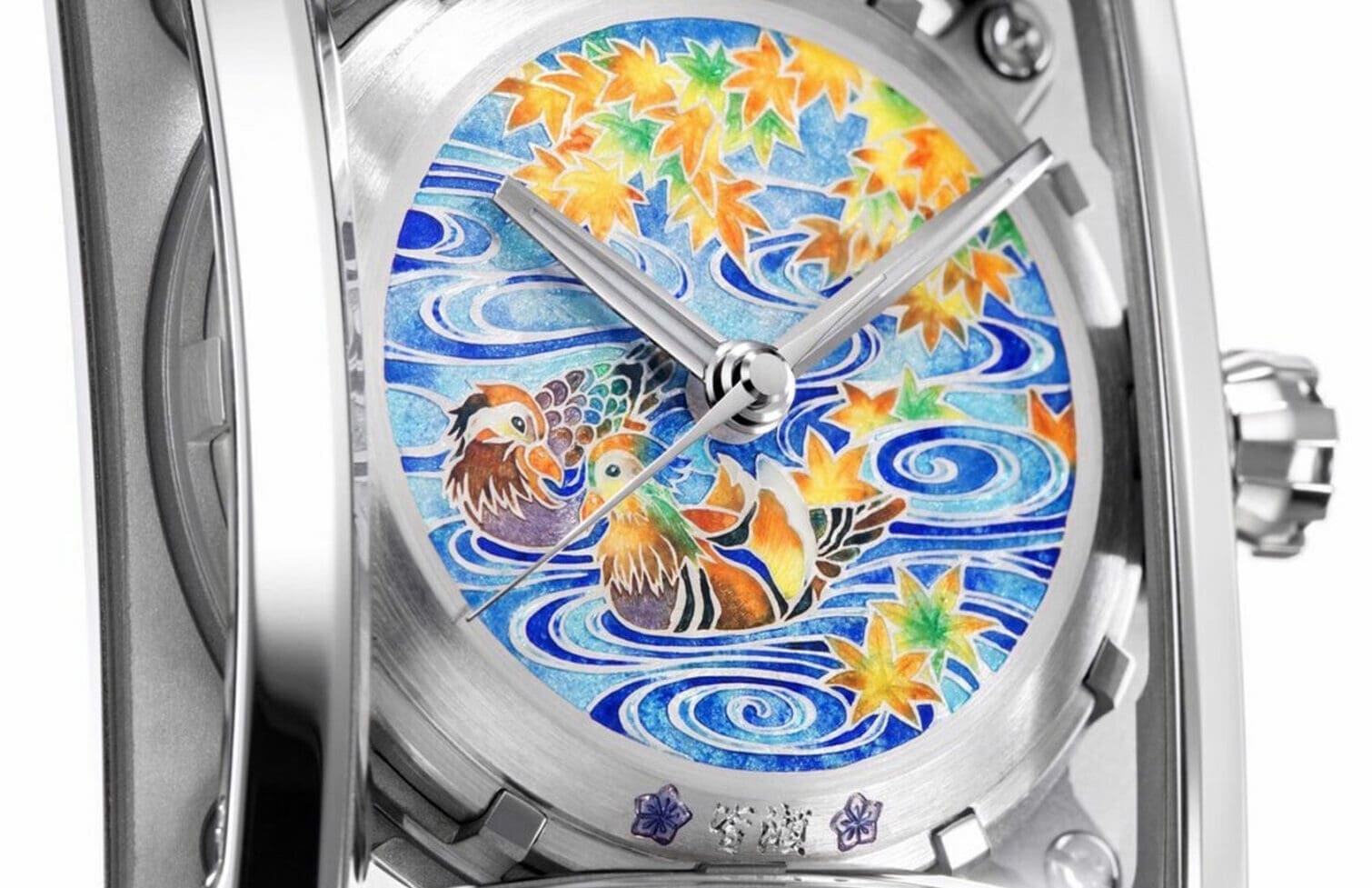

The Champlevé series forgoes gold or brass, instead using pure silver, which is engraved and enameled. The firing process for enamel is very similar to lacquering, but the results are very different; the silver background allows the brighter colours to shine brightly and pop out from the more neutral base. Each theme is limited to just eight pieces, with the first piece being “Minase One,” which depicts a playful duck swimming amongst maple leaves.
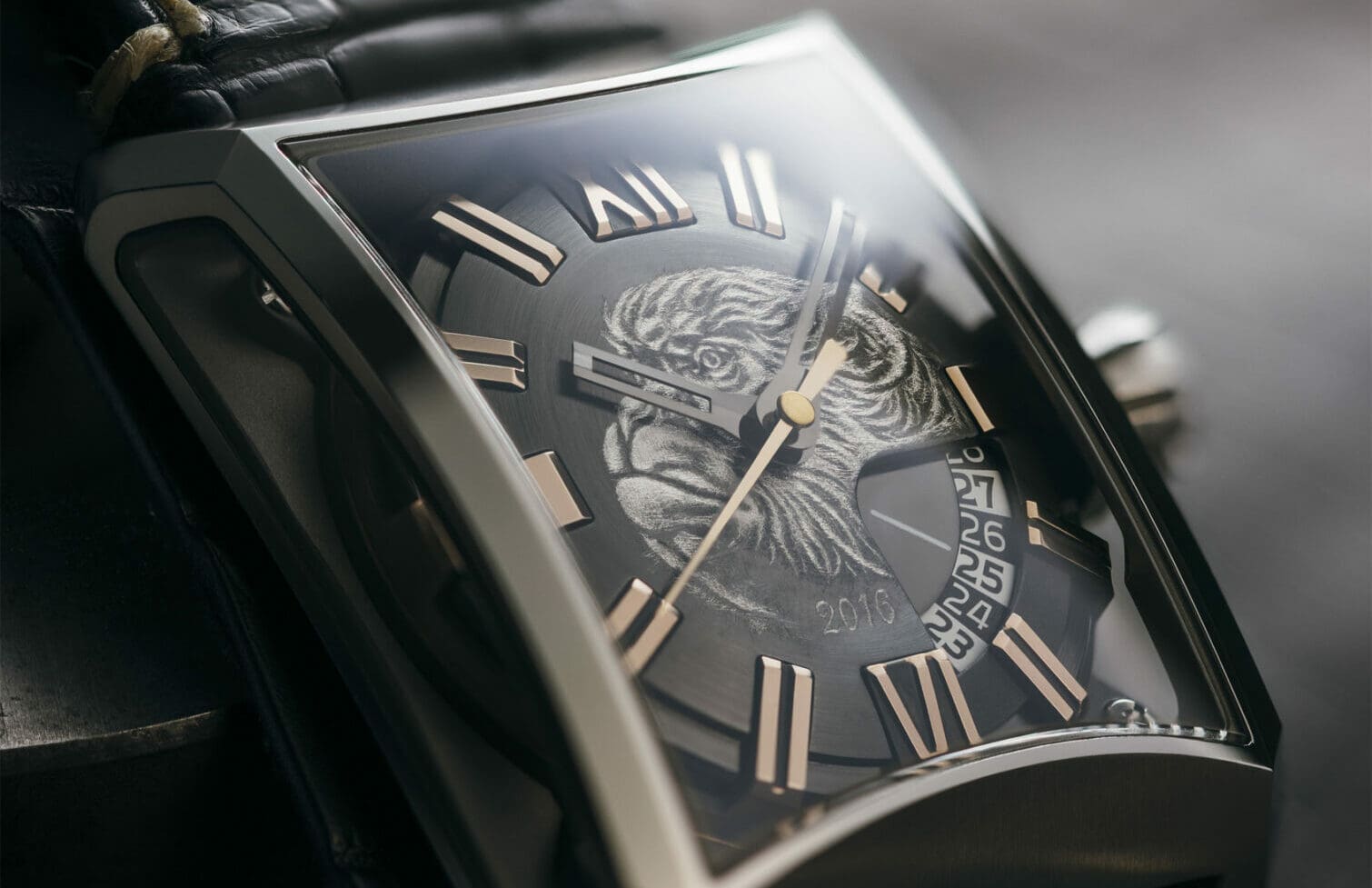

The Needle Art series begins with a stainless steel plate with a black DLC coating, which is then carefully carved away with a thin needle. This is a technique similar to traditional etching, but less repeatable, resulting in a striking photo-realistic finish. If there’s a design that can’t be achieved through engraving, Needle Art is the answer. Silver filigree is a very unique technique alongside the others we’ve covered, offering a more three-dimensional expression than ever before. Two or three silver wires, just 0.2mm in diameter, are twisted together to form an ornate structure in the center of the dial.


For more information about the Minase Masterpiece Collection and pricing for custom options, please visit our website. here.
